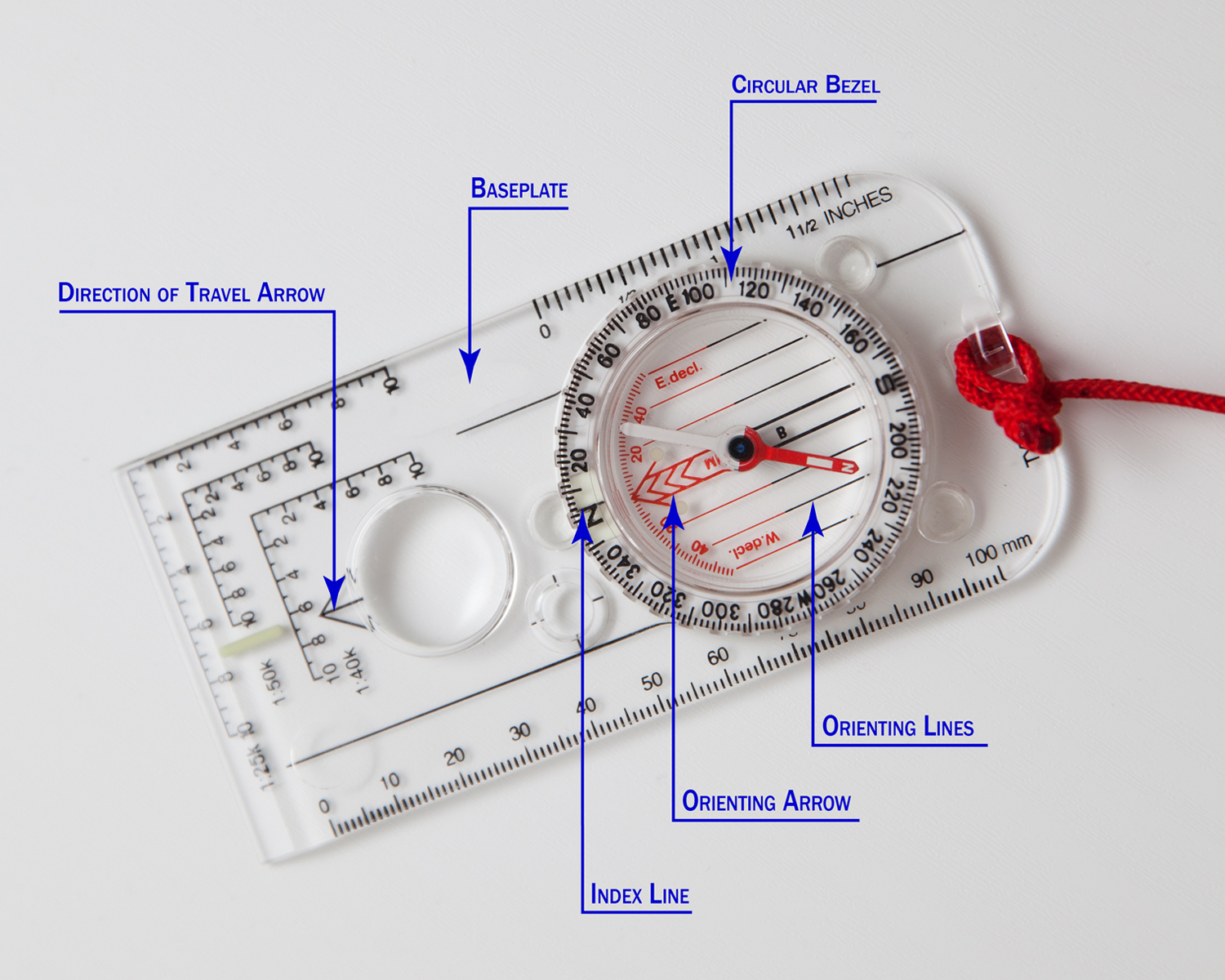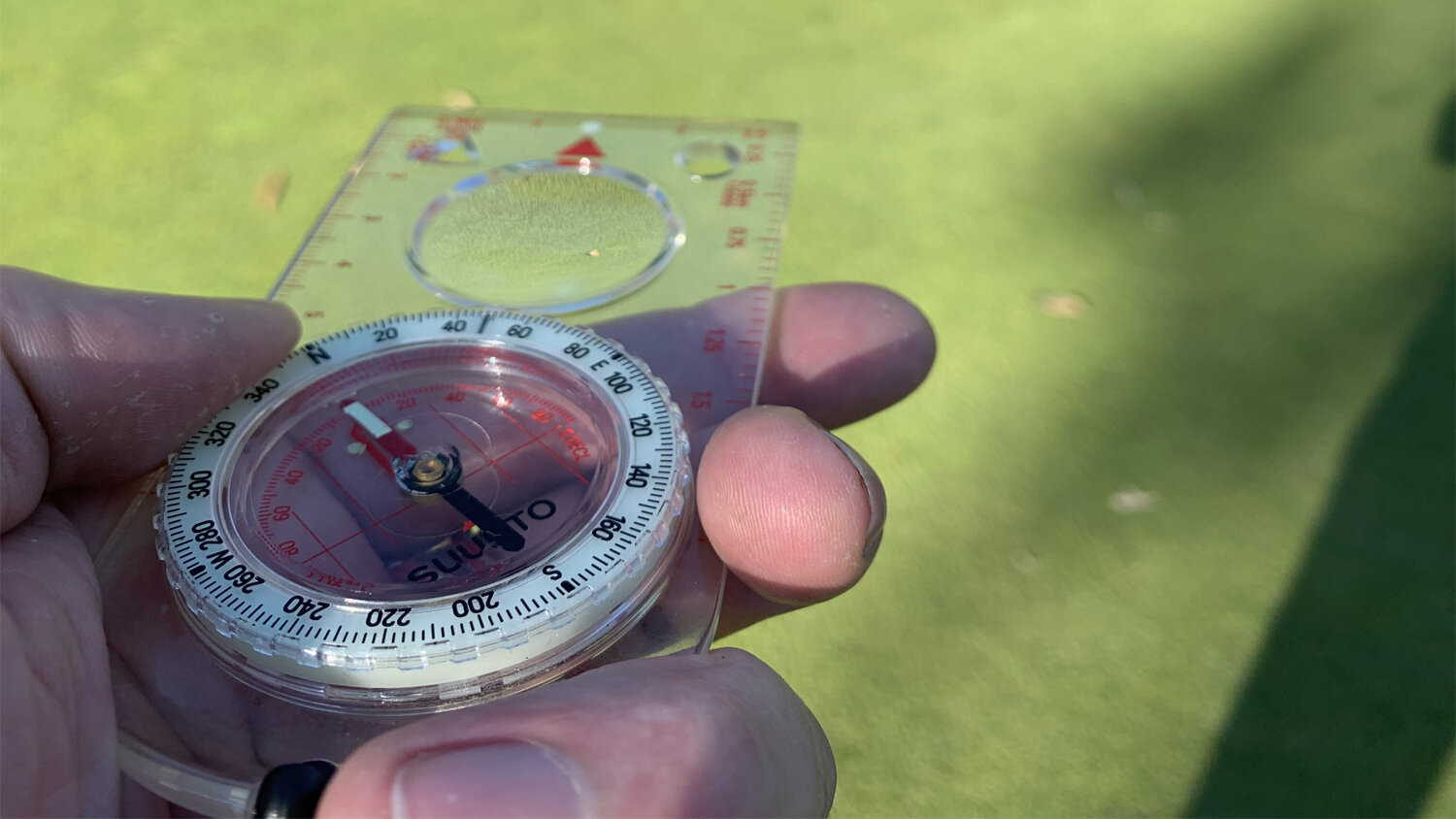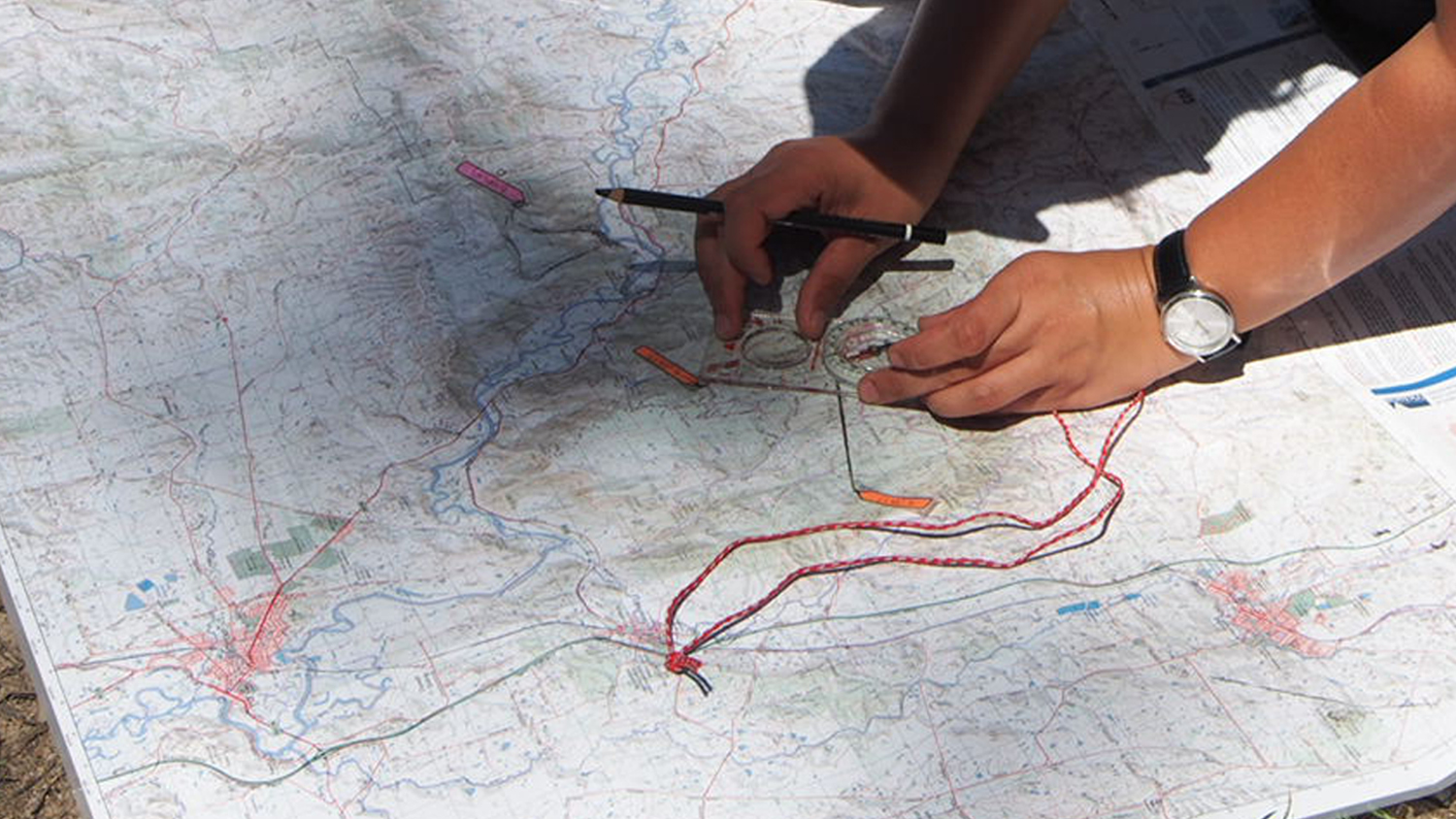The first stage of navigating with a map and compass involves working out your grid bearing. Here’s how it’s done.

Note that the magnetic needle of the compass is not relevant when taking a grid bearing.
Step 1: Place the compass on the map so that the long edge of the baseplate lines up point A (where you are) with point B (where you want to go), ensuring that the direction of travel arrow marked on the baseplate points in the direction you want to go.
Step 2: Rotate the circular bezel of the compass housing so that the orienting lines are aligned with the vertical north-south grid lines of the map, ensuring that the red orienting arrow is pointing towards north on the map.
Your grid bearing is the number on the circular bezel that is now lined up with the index line (which is an extension of the direction of travel arrow).
Note: Before you set off, you will need to convert the grid bearing to a magnetic bearing. Check out this post for more information on adjusting for the grid magnetic angle.

Want to head out on the trails this season, but don't have the confidence to find your way? Join in on one of our Essentials of Navigation Courses.
The one-day intensive adventure course with a host of fun and challenging activities crammed into one epic outing.
Learn the essential skills of navigating in the wilderness for outdoor pursuits including hiking, trail running, backcountry skiing, mountain biking and adventure racing.
The two-day intensive adventure programme infusing a range of exhilarating adventure activities with tough Special Forces Selection style challenges.
3-day private advanced navigation exercise 21-23 March 2025.
Whether you take a magnetic bearing in the field and want to use that bearing to determine your position on your map, or you take a grid bearing on your map and want to use that bearing to find your direction in the field, you will need to make an adjustment to allow for the grid magnetic angle. This is how to do it.
You can currently see where you want to go but you are about to lose sight of your destination? Here's how to use a compass to find your way.
The first stage of navigating with a map and compass involves working out your grid bearing. Here’s how it’s done.
Have you ever found yourself in the situation where you know roughly where you are on the map, but just can’t pinpoint your location? Here’s how to work out your position by triangulation, or resection, using a map and compass.
You can see where you are on the map and you know where you want to go. But you still don't know which direction to actually start walking! Here's how to use a compass to find your way.
Your mobile phone may be awesome if you want to avoid the current traffic, take the fastest route by car, or to check in with your mates at the local café. It can be near on useless, however, if you’re planning a route through remote wilderness over rugged terrain by foot.






For the serious athlete, this ultra-tough adventure course has been inspired by the gruelling SAS Selection and is designed to test your mettle.
Click here for details.